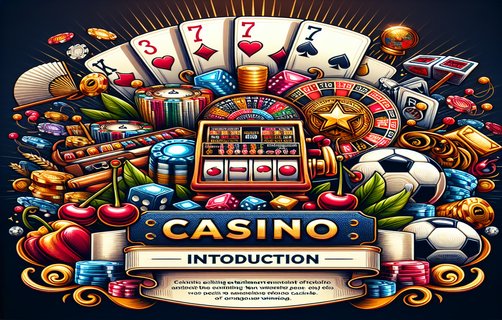Mastering the Art of Rummy: A Comprehensive Guide to Strategy and Mechanics
रम्मी की कला में महारत: रणनीति और यांत्रिकी पर एक व्यापक मार्गदर्शिका
Rummy, a beloved card game enjoyed by millions around the globe, combines luck, strategy, and a touch of psychology. The essence of Rummy lies in its unique mechanics, which vary significantly across various versions. In this analysis, we will delve into several critical aspects that enhance the gameplay experience—dice-based mechanics, territorial sections, game board layout, role cards, action schedule limits, and resource management rules.
Firstly, the implementation of dice-based mechanics introduces a thrilling twist to traditional Rummy. While the classic variant relies mainly on card play, integrating dice can influence turn sequences and add randomness to draws. Players roll dice to determine the number of cards they can draw or discard, adding an extra layer of strategy as they must consider both their card combinations and the uncertain outcomes of the dice.
Territorial sections are another innovative aspect that enhances gameplay. In some adaptations of Rummy, the game board is segmented into various territories, influencing where players can meld their cards or form sets. This feature encourages players to strategically claim sections that will benefit their hand while restricting opponents' movements. Successful navigation of these territories can lead to significant advantages, making positioning a key factor in winning.
The game board layout in Rummy is crucial for maintaining clarity and flow. A well-designed board not only organizes the play area but also visually represents the ongoing actions of players. With designated spots for melds, discards, and special action areas, players are less likely to lose track of their cards and strategies. The clarity provided by a thoughtful board design can significantly enhance the enjoyment and strategic depth of the game.
Role cards further diversify the Rummy experience, assigning unique abilities to each player. These cards can offer advantages, such as allowing an extra draw, swapping cards with opponents, or even blocking specific actions for a turn. In essence, role cards introduce variable powers that players can exploit, thus increasing the potential for strategic alliances and tension among competitors.
Action schedule limits are vital for maintaining the game’s pace and ensuring that players remain engaged. By establishing specific limits on how long a player can take to decide on actions, the game keeps a brisk rhythm, preventing downtime that can sap excitement. This mechanic encourages quick thinking and impromptu strategy adjustments, making the game more dynamic.
Lastly, effective resource management rules are essential in Rummy. Players must judiciously manage their hand—deciding when to meld cards, when to hold, and when to risk discarding a potentially valuable card. The tension between making quick combinations and preserving resources creates an intricate dance that defines the gameplay.

In conclusion, the multifaceted layers of Rummy—from dice mechanics and territorial strategies to resource management—foster a game rich in both fun and strategy. Understanding these elements can transform a casual player into a formidable contender, paving the way for a rewarding Rummy experience.
रम्मी, एक प्रिय कार्ड खेल है जिसे दुनिया भर में लाखों लोग अविस्मरणीय आनंद के साथ खेलते हैं, जिसमें भाग्य, रणनीति और थोड़ा मनोविज्ञान शामिल है। रम्मी का सार इसके अद्वितीय मैकेनिक्स में है, जो विभिन्न संस्करणों में महत्वपूर्ण भिन्नताएँ लाते हैं। इस विश्लेषण में, हम कुछ मौलिक पहलुओं में गहराई से उतरेंगे जो खेल अनुभव को बढ़ाते हैं- डाइस-आधारित यांत्रिकी, क्षेत्रीय वर्ग, खेल बोर्ड का लेआउट, भूमिका कार्ड, क्रिया कार्यक्रम सीमाएँ और संसाधन प्रबंधन नियम।
सबसे पहले, डाइस-आधारित यांत्रिकी का कार्यान्वयन पारंपरिक रम्मी में रोमांचक मोड़ प्रस्तुत करता है। जबकि क्लासिक रूप मुख्य रूप से कार्ड खेलने पर निर्भर करता है, डाइस को शामिल करना बारी की अनुक्रम को प्रभावित कर सकता है और ड्रॉ में यादृच्छिकता जोड़ सकता है। खिलाड़ी डाइस को यह निर्धारित करने के लिए रोल करते हैं कि वे कितने कार्ड ड्रॉ या डिस्कार्ड कर सकते हैं, जो और अधिक रणनीतिक परत जोड़ता है क्योंकि उन्हें अपने कार्ड संयोजनों और डाइस के अनिश्चित परिणामों पर विचार करना पड़ता है।
क्षेत्रीय वर्ग एक अन्य नवाचारी पहलू है जो खेल के अनुभव को बढ़ाता है। रम्मी के कुछ अनुकूलनों में, खेल बोर्ड को विभिन्न क्षेत्रों में विभाजित किया गया है, जो यह प्रभावित करता है कि खिलाड़ी अपने कार्ड को मिले या सेट बनाते हैं। यह विशेषता खिलाड़ियों को उन क्षेत्रों को रणनीतिक रूप से दावे करने के लिए प्रेरित करती है जो उनके हाथ को लाभ पहुंचाती हैं जबकि विरोधियों की गति को सीमित करती है। इन क्षेत्रों का सफल प्रबंधन महत्वपूर्ण लाभ दे सकता है, जिससे स्थिति खेल जीतने में कुंजी कारक बनता है।
रम्मी में खेल बोर्ड का लेआउट स्पष्टता और प्रवाह बनाए रखने के लिए महत्वपूर्ण है। एक अच्छी तरह से डिज़ाइन किया गया बोर्ड न केवल खेल क्षेत्र को व्यवस्थित करता है बल्कि खिलाड़ियों की चल रही कार्रवाई का दृश्य प्रतिनिधित्व भी करता है। मिले, डिस्कार्ड और विशेष क्रिया क्षेत्रों के लिए निर्दिष्ट स्थानों के साथ, खिलाड़ियों के लिए अपने कार्ड और रणनीतियों को खोना कम संभव होता है। एक विचारशील बोर्ड डिजाइन द्वारा प्रदान की गई स्पष्टता खेल के आनंद और रणनीतिक गहराई को काफी बढ़ा सकती है।
भूमिका कार्ड रम्मी अनुभव को और विविधता प्रदान करते हैं, प्रत्येक खिलाड़ी को अद्वितीय क्षमताएँ सौंपकर। ये कार्ड लाभ प्रदान कर सकते हैं, जैसे अतिरिक्त ड्रॉ की अनुमति देना, प्रतिकूल के साथ कार्डों का आदान-प्रदान करना, या यहां तक कि एक बारी के लिए कुछ विशिष्ट क्रियाओं को अवरुद्ध करना। असल में, भूमिका कार्ड भिन्न-भिन्न शक्तियाँ प्रस्तुत करते हैं जिनका खिलाड़ी लाभ उठाकर और रणनीतिक गठबंधन और प्रतिकूल के बीच तनाव बढ़ाने का प्रयास कर सकते हैं।

क्रिया कार्यक्रम सीमाएँ खेल के गति बनाए रखने और यह सुनिश्चित करने के लिए महत्वपूर्ण हैं कि खिलाड़ी व्यस्त रहें। कार्रवाई पर निर्णय लेने के लिए एक खिलाड़ी को कितना समय लेना चाहिए, इस पर विशेष सीमाएँ स्थापित करके, खेल एक उत्साहित ताल बनाए रखता है, जो डाउनटाइम को रोकता है जो उत्साह को प्रभावित कर सकता है। यह यांत्रिकी तर्कात्मक विचार और अनियोजित रणनीति समायोजनों को प्रोत्साहित करती है, जिससे खेल और भी गतिशील बनता है।
अंततः, रम्मी में प्रभावी संसाधन प्रबंधन नियम अत्यंत महत्वपूर्ण हैं। खिलाड़ियों को अपने हाथ का विवेकपूर्ण प्रबंधन करना चाहिए- यह तय करना कि कब कार्ड को मिले, कब रखना है, और कब एक संभावित मूल्यवान कार्ड को डिस्कार्ड करने का जोखिम उठाना है। तात्कालिक संयोग बनाने और संसाधनों को बनाए रखने के बीच का तनाव एक जटिल नृत्य बनाता है जो खेल को परिभाषित करता है।
अंत में, रम्मी की बहुस्तरीय परतें - डाइस मैकेनिक्स और क्षेत्रीय रणनीतियों से लेकर संसाधन प्रबंधन तक - एक ऐसा खेल पैदा करती हैं जो मजेदार और रणनीतिक दोनों है। इन तत्वों को समझना एक आकस्मिक खिलाड़ी को एक प्रभावशाली प्रतियोगी में बदल सकता है, जो रम्मी के अनुभव को समृद्ध करने का मार्ग प्रशस्त करता है।

comments
CardMaster92
This analysis of Rummy opens up new strategies I'd never considered!
DiceQueen
Incorporating dice sounds intriguing! Can't wait to try it.
TacticalGamer
Love the idea of role cards! It will definitely spice things up.
TerritoryTactician
The territorial sections concept is genius and adds depth.
RummyRingleader
This article captured the essence of Rummy perfectly!
Strategist007
Awesome insights on resource management! Really helpful.